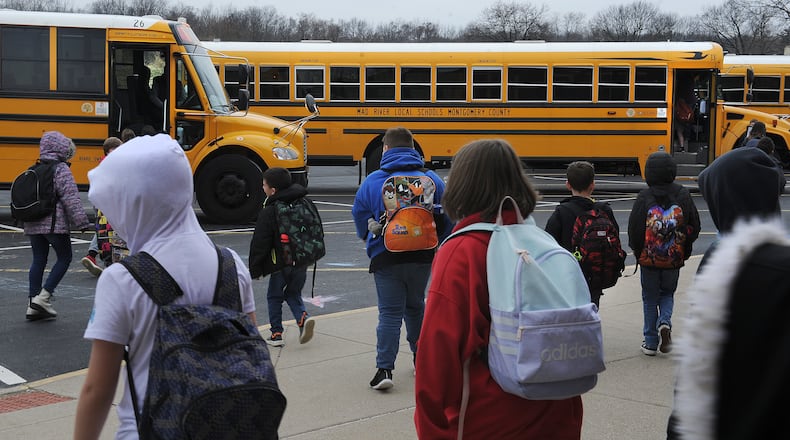Budget cuts — including as many as 12 job cuts — have been outlined by the board of education should the tax issue fail. But approval of the first school levy on the ballot in Riverside since 2012 would not necessarily eliminate further reductions, Mad River Treasurer Jerry Ellender said.
Ellender said the additional millage would raise about $1.5 million a year at a time when, levy promoters say, it is sorely needed.
“We haven’t had a levy” in a long time, said Mike Denning, Riverside’s deputy mayor and treasurer for the Mad River Committee for Good Schools. “And the staff and the board of education have done everything to keep the funding they’ve had and used it in the best way possible. They’ve cut everything they can cut. They’re only asking for 5.9 mills and prices have gone up — especially the last couple years — as everybody knows.”
Among the Dayton area’s 20 largest school districts, Mad River has gone slightly longer than average since its last levy that increased taxes. Eleven of those districts have had a levy more recently than Mad River, and eight have not, according to Dayton Daily News research.
The levy committee has not held any public forums on the tax levy and none are planned. Promotion of the levy has been done through door-to-door canvassing, hand bills, on the committee’s Facebook page and other social media platforms, members said.
The group’s main message is that “the schools are essential to the flourishing of Riverside,” committee member Ted Rastatter said.
“Mad River schools are filled with incredible administrators, educators and students,” he said. “And we want our community to flourish and that means having healthy schools and funded schools. So, we’re wanting the community to get behind that.”
According to the Ohio Department of Education’s District Profile Report, Mad River is roughly middle of the road in spending, ranking 286th of 606 school districts in expenditure per student. The district ranked 505th on the last state report card in performance index on state tests, almost exactly matching its ranking (504th) in economically disadvantaged students.
The 2012 levy, which also asked for an additional 5.9 mills, was approved by more than 53% of voters in the district, county election records show.
Mad River operated at a financial deficit in both 2019-20 and 2020-21 according to the district’s five-year forecast. The district made budget cuts in 2021-22, with spending dropping from $47.5 million to $44.3 million, and the district ending that year in the black. Last summer, the district had 35% of one year’s spending in the bank, fairly normal for an Ohio school district.
But the district estimates it will return to deficit spending starting next year.
Proposed cuts with a levy failure are estimated at about $1.48 million, more than $925,000 of which would involve job salaries and benefits, according to Mad River documents.
Seven classified positions (secretaries, bus drivers, custodians, aides) and five certified ones (teachers, counselors) may be at stake should the levy be rejected, Mad River records show.
But retirements and resignations at the end of this school year may change those numbers, Ellender said.
“It could be there aren’t as many cuts because of attrition or we won’t have to actually” reduce staff “because people already left,” he said. “We really won’t know those things until summer for sure.”
With “significant” deficits projected in future years, levy passage will not guarantee further cuts will not be necessary, Ellender said.
“There probably will be some cuts or reductions if we pass the levy … because we need to reduce our costs,” he said.
District expenses are projected to rise $10.9 million from 2022-27, while the district estimates revenue will increase only $3.3 million in that span. Salary and benefit increases account for nearly $9 million of the projected additional expenses during that time.
About the Author

